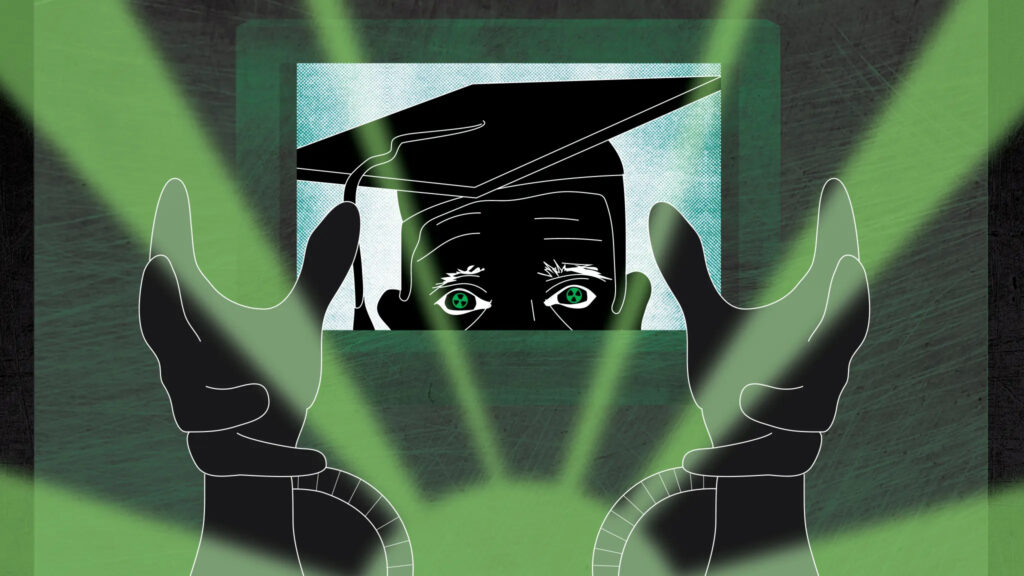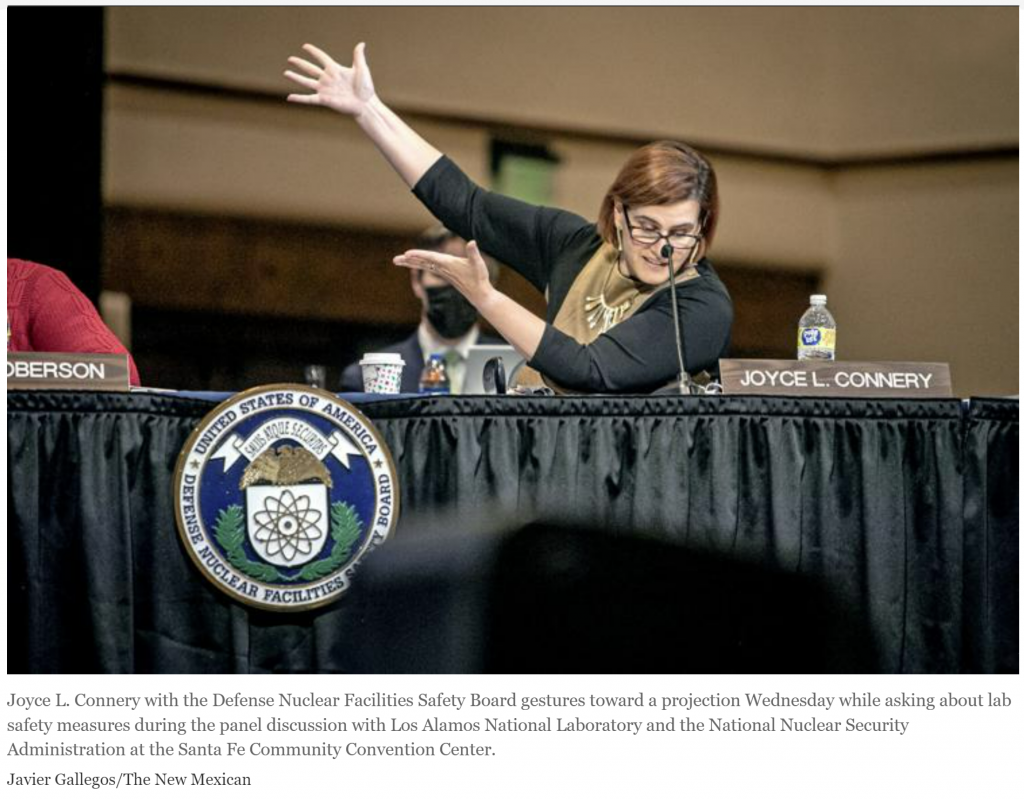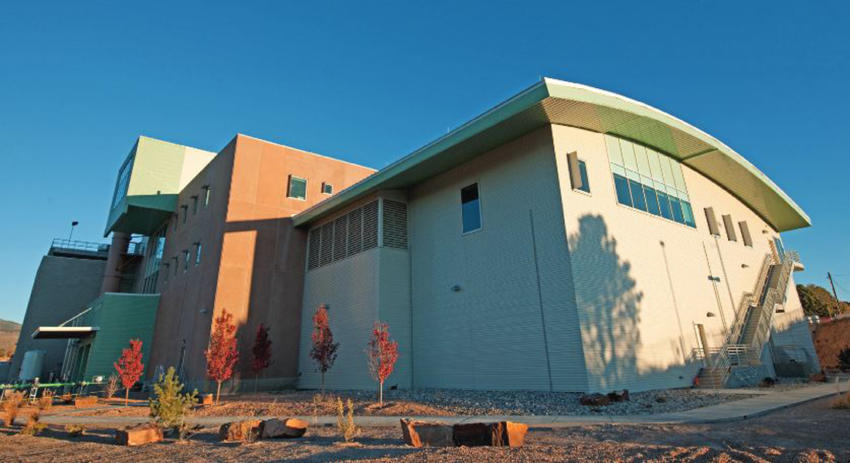WHAT IS THE DNFSB?
The Defense Nuclear Facilities Safety Board (DNFSB) was established as an independent agency on September 29, 1988, by the Atomic Energy Act of 1954. The Board is composed of five members appointed by the President, with the advice and consent of the Senate, from among United States citizens who are respected experts in the field of nuclear safety.
The DNFSB reviews and evaluates the content and implementation of standards for defense nuclear facilities of the Department of Energy (DOE); investigates any event or practice at these facilities / which may adversely affect public health and safety; and reviews and monitors the design, construction, and operation of facilities.
The Board makes recommendations to the Secretary of Energy concerning DOE defense nuclear facilities to ensure adequate protection of public health and safety. In the event that any aspect of operations, practices, or occurrences reviewed by the Board is determined to present an imminent or severe threat to public health and safety, the Board shall also transmit its recommendations directly to the President.
News & Updates
DNFSB Recommendation February 8, 2024 – Excerpts Pertaining to LANL
Published 2/8/24 in the Federal Register at https://www.govinfo.gov/content/pkg/FR-2024-02-08/pdf/2024-02513.pdf
Pre-published at: https://public-inspection.federalregister.gov/2024-02513.pdf
Page numbers below are from that. All excerpts are verbatim.
DNFSB Recommendation 2003-01
Onsite Transportation Safety
[TSD = “Transportation Safety Document”
MAR = “Materials at Risk”, typically plutonium]
Page 2: however, more work is necessary to ensure the LANL TSD appropriately identifies all hazards, analyzes all pertinent accident scenarios, and evaluates the effectiveness of all credited safety controls.
3: the risk remains that LANL or other defense nuclear sites may regress to inadequate TSDs that fail to provide an effective set of safety controls
4: These safety issues are particularly concerning given the high material-at-risk (MAR) allowed by the TSD, the proximity of LANL’s onsite transportation routes to the public, and the nature of several credible accident scenarios. These factors result in high calculated unmitigated dose consequences to the public without an adequate safety control strategy.
Searchlight New Mexico – The ABCs of a nuclear education
New Mexico’s local colleges are training students to work in a plutonium pit factory. What does this mean for their future — and the world’s?
By Alicia Inez Guzmán, SEARCHLIGHT NEW MEXICO | June 7, 2023 searchlightnm.org

Illustration by Kevin Beaty
Every day, thousands of people from all parts of El Norte make the vertiginous drive up to Los Alamos National Laboratory. It’s a trek that generations of New Mexicans have been making, like worker ants to the queen, from the eastern edge of the great Tewa Basin to the craggy Pajarito Plateau.
All in the pursuit of “good jobs.”
Some, inevitably, are bound for that most secretive and fortified place, Technical Area 55, the very heart of the weapons complex — home to PF-4, the lab’s plutonium handling facility, with its armed guards, concrete walls, steel doors and sporadic sirens. To enter “the plant,” as it’s known, is to get as close as possible to the existential nature of the nuclear age.
Over the next few years, the Los Alamos Plutonium Facility (PF-4) will undergo a paradigm shift to a large-scale production facility for weapon components, with the largest number of workers in its history. NNSA is investing billions of dollars in production-related infrastructure at Los Alamos, and the Board is continuing to urge commensurate investment in the safety infrastructure needed to ensure workers and the public are adequately protected from potential accidents at PF-4.
THE DEFENSE NUCLEAR FACILITIES SAFETY BOARD
For 40 years, some 250 workers were tasked, mostly, with research and design. But a multibillion-dollar mission to modernize the nation’s nuclear arsenal has brought about “a paradigm shift,” in the words of the Defense Nuclear Facilities Safety Board, a federal watchdog. Today, the plant is in the middle of a colossal expansion — growing from a single, aged building to what the safety board calls “a large-scale production facility for weapon components with the largest number of workers in its history.”
NukeWatch DNFSB 2022 Hearing Comments 1-20-23
Nuclear Watch New Mexico January 20, 2023 | Email
Defense Nuclear Facilities Safety Board
625 Indiana Avenue NW, Suite 700
Washington, DC 20004
Via email at <hearing@dnfsb.gov>
Re: Comments concerning the November 16, 2022 public hearing regarding legacy cleanup activities, nuclear safety, and increased production activities at the Los Alamos National Laboratory
Dear Safety Board:
Nuclear Watch New Mexico (NukeWatch) appreciates the opportunity to provide follow up written comments for the November 16, 2022 public hearing in Santa Fe, NM. We want to thank the Board for its continuing concern over Los Alamos National Laboratory (LANL) safety issues and for having a public hearing to begin with. Further, we are grateful for the DNFSB’s perseverance in the face of the Department of Energy’s arguably illegal attempts to restrict its access. We look forward to many more years of the Safety Board’s insights and recommendations on nuclear facilities at DOE and NNSA sites, for which the DNFSB is uniquely positioned. Your service is invaluable and irreplaceable. Thank you!
Our mission statement: Nuclear Watch New Mexico seeks to promote safety and environmental protection at nuclear facilities; mission diversification away from nuclear weapons programs; greater accountability and cleanup in the nation-wide nuclear weapons complex; and consistent U.S. leadership toward a world free of nuclear weapons.
Watchdog agency grills LANL, nuclear officials on lab safety
[NukeWatch would amend this headline to add “‘lightly’ grills” – The DNFSB was asking tough questions, but DOE and the LANL contractors were not forthcoming with those answers.]
“Much of the discussion involved complex, technical subjects. But board Chairwoman Joyce Connery said a basic complaint is the lack of response the board has gotten at times when raising concerns in letters sent to the lab and nuclear security agency.”
THE SANTA FE NEW MEXICAN | By Scott Wyland, November 16, 2022 santafenewmexican.com

A federal watchdog agency on Wednesday grilled top officials from Los Alamos National Laboratory and the agency that oversees nuclear weapons about ongoing safety concerns and how they aim to resolve them as the lab gears up to produce an unprecedented number of warhead triggers.
The Defense Nuclear Facilities Safety Board, an independent organization within the executive branch, questioned lab Director Thom Mason and National Nuclear Security Administration head Jill Hruby about safety issues that could prove important as the lab moves toward making 30 bomb cores, known as pits, per year by 2026.
The board provides recommendations and advice to the president and the secretary of energy regarding public health and safety issues at Department of Energy defense nuclear facilities.
The daylong hearing was held at the Santa Fe Community Convention Center. It is the first time in several years the safety board has held a public hearing in the Santa Fe area.
Continue reading
Watch: DNFSB Hearing on “Legacy cleanup activities, nuclear safety, and increased production activities” at Los Alamos National Laboratory (LANL)
Two more radioactive releases reported at LANL
A lab critic said he’s concerned about flaws in worker training, equipment and inspections contributing to glove box breaches as LANL gears up for producing plutonium pits for warhead triggers.
“As things ramp up, we’re bound to have more problems,” said Jay Coghlan, executive director of Nuclear Watch New Mexico.
By Scott Wyland swyland@sfnewmexican.com | March 8, 2022 santafenewmexican.com
Los Alamos National Laboratory had two additional breaches of a sealed radioactive-material compartment known as a glove box in January, bringing the total to three in one month, according to a government watchdog.
One employee damaged a glove attached to a sealed compartment while manually moving material with a disabled trolley through the enclosed space, causing enough of a release to contaminate the person’s face.
Los Alamos lab sees two mishaps in a week
The water spill should be a reminder that the plutonium facility’s work is done by people, and people make mistakes, said Scott Kovac, research and operations director for the nonprofit Nuclear Watch New Mexico.
“Pit production will place a real time-pressure crunch on the workers and lead to more accidents,” Kovac said.
“It should lead us to consider the consequences if someone left a plutonium furnace on or something that could endanger the public…these kinds of missteps are likely to increase as the lab ramps up production of plutonium pits used to trigger nuclear warheads. Current plans call for the lab to make 30 of the nuclear bomb cores a year by 2026,”
By: Scott Wyland | santafenewmexican.com April 26, 2021
Los Alamos National Laboratory had two mishaps in one week: a glove box breach that contaminated workers’ protective equipment and a spill of 1,800 gallons of water into a vault corridor after an employee left a valve open.
The incidents were the latest in a series of accidents in recent months at the lab, as reported by the Defense Nuclear Facilities Safety Board.
In the board’s most recent report, an alarm sounded March 29 when a worker tore a protective glove attached to a sealed compartment known as a glove box while handling a piece of plutonium.
Continue reading
More Safety Problems at Y-12 Bomb Complex
TENNESSEE NUCLEAR WEAPONS FACILITY CONTINUES TO BE PLAGUED BY SAFETY PROBLEMS
SAFETY BOARD: OAK RIDGE NUCLEAR STORAGE FACILITY UNSAFE
NNSA AND CONTRACTOR CONSPIRE TO DOCTOR SAFETY RECORDS
BY: OAK RIDGE ENVIRONMENTAL PEACE ALLIANCE | orepa.org
The safest building at the Y-12 National Security Complex in Oak Ridge, Tennessee, is not safe enough. That is the conclusion of the Defense Nuclear Facilities Safety Board in an April 21, 2020, Staff Report on the storage of reactive materials at the Highly Enriched Uranium Materials Facility (HEUMF). The Staff Report was released on June 1, 2020, accompanied by a letter from Safety Board Chair Bruce Hamilton to Dan Brouillette, Secretary of Energy.
Faced with three separate discoveries of highly enriched uranium that posed an undetermined safety risk because it was pyrophoric, the contractor at Y-12, Consolidated Nuclear Services, without characterizing the materials, decided to re-categorize all the materials as not pyrophoric. NNSA agreed and took the additional step of ordering the contractor to revise the Documented Safety Analysis for the HEUMF to incorporate the material types into the facility safety basis. Neither action was justified, according to the Safety Board, and neither was sufficient to assure worker safety.
DOE Repeatedly Asks Safety Board for Time Extensions, Los Alamos Lab Asked for >150 Cleanup Milestone Extensions, But During Pandemic NNSA Rejects NM Senators’ Request for Extension of Public Comment on Plutonium Bomb Core Production

Lisa Gordon-Hagerty, head of the National Nuclear Security Administration (NNSA), has rejected a request by New Mexico Senators Tom Udall and Martin Heinrich to extend the public comment period on expanded plutonium “pit” bomb core production because of the COVID-19 pandemic. In contrast, even in normal times NNSA and its parent Department of Energy routinely ask other government agencies for major time extensions when it comes to cleanup and independent oversight.
The two Senators requested a 45 day comment period extension on behalf of more than 120 organizations and individuals. Before that, Tom Udall and Martin Heinrich were among 24 Senators who asked the Office of Management and Budget to extend all federal public comment periods during the coronavirus national emergency.
LANL Plans to Release Up To ~100,000 Curies of Radioactive Gas
Santa Fe, NM – On March 11, the Los Alamos National Laboratory (LANL) sent the federal Environmental Protection Agency a formal notice that the Lab will intentionally release up to some 100,000 curies of tritium, a radioactive isotope of hydrogen gas, beginning April 17, 2020.
An internal Lab document states that actual “anticipated emissions” could be half that because of tritium remaining behind in equipment but offers no documentation to substantiate it. During the 1980’s LANL arbitrarily used a self-declared “building shielding factor” not approved by the EPA that reduced its legally required annual calculated radioactive air dose to the public by a third. When that reduction was disallowed LANL was in fact in legal violation of the Clean Air Act. With that as an example, undocumented reductions in radioactive doses claimed by LANL should be viewed with suspicion.

